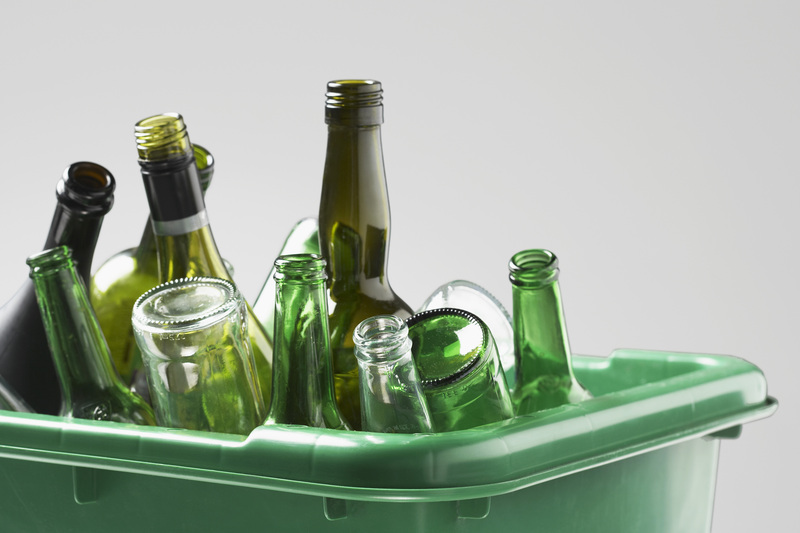What Defines Waste as Hazardous? Key Insights
Posted on 06/09/2025
What Defines Waste as Hazardous? Key Insights
Waste management has become a pivotal global focus with mounting environmental and public health concerns. However, not all waste poses the same level of danger. Hazardous waste stands apart due to its potential threats to human health and the environment. But what actually defines waste as hazardous? This guide explores the characteristics, regulations, and implications surrounding the classification of hazardous waste, providing you with actionable, insightful knowledge.
Understanding Hazardous Waste: Basic Concepts
Before delving into the specifics, it is crucial to establish a foundational understanding of what constitutes hazardous waste. In the simplest terms, hazardous waste refers to waste materials that exhibit properties making them dangerous or potentially harmful to humans or the environment.
Hazardous waste can be generated from numerous sources, including:
- Industrial manufacturing processes
- Healthcare activities
- Households (e.g., batteries, cleaners)
- Agricultural activities
- Laboratory and research facilities
These wastes may be solids, liquids, gases, or sludges, and they often require special handling, treatment, or disposal methods.
Legal Perspective: Defining Hazardous Waste
The definition of hazardous waste is framed by a web of international and national regulations. In the United States, for example, the Resource Conservation and Recovery Act (RCRA) provides the legal structure. The RCRA identifies hazardous waste as waste that is specifically listed by the Environmental Protection Agency (EPA) or exhibits hazardous characteristics.
- Listed wastes: These are wastes that explicitly appear on one of four EPA lists (F-list, K-list, P-list, and U-list).
- Characteristic wastes: Wastes that display properties such as ignitability, corrosivity, reactivity, or toxicity.
Globally, the Basel Convention governs hazardous waste movement across borders, providing definitions based on toxicity, persistence, and potential harm.

Key Characteristics That Define Hazardous Waste
Understanding what makes certain waste hazardous is crucial for proper management. Waste is classed as hazardous if it possesses specific dangerous properties--referred to as 'characteristics' in regulatory language. Let's break down these key defining properties:
1. Ignitability
- Definition: A waste is considered ignitable if it can easily catch fire and sustain combustion under standard conditions.
- Examples: Gasoline, solvents, alcohol-based products, and certain paint wastes.
- Regulatory Criteria: EPA defines wastes as ignitable if they have a flash point below 60?C (140?F) or exhibit fire hazard traits.
2. Corrosivity
- Definition: Corrosive wastes can destroy or irreversibly damage living tissue and materials they touch.
- Examples: Strong acids (such as hydrochloric acid), caustic cleaners, and battery acid.
- Criteria: Wastes with pH <= 2 or >= 12.5, or those capable of corroding steel.
3. Reactivity
- Definition: Reactive wastes are unstable under standard conditions and can cause explosions, release toxic gases, or undergo violent reactions.
- Examples: Unused explosives, certain cyanide or sulfide bearing wastes, and old chemicals that can detonate.
- Regulatory Aspects: These present serious handling risks both during storage and transport.
4. Toxicity
- Definition: Toxic wastes are harmful or fatal when ingested, inhaled, or absorbed. They often leach dangerous substances into the soil or water.
- Examples: Heavy metals like arsenic, lead, mercury, pesticides, and certain pharmaceuticals.
- Toxicity Characteristic Leaching Procedure (TCLP): A standardized EPA test determines if waste leaches hazardous quantities of toxins.
Listed Wastes: The Regulatory Shortcuts
Apart from characteristic properties, regulatory agencies maintain lists of hazardous wastes to simplify identification:
- F-list: Wastes from common manufacturing and industrial processes (e.g., solvents used in cleaning).
- K-list: Specific wastes from specific industries (e.g., petroleum refining, pesticide manufacturing).
- P-list & U-list: Discarded commercial chemical products, such as pharmaceuticals or off-spec chemicals.
Being "listed" means a waste is automatically considered hazardous--regardless of whether it demonstrates hazardous characteristics.
Why Isn't All Waste Labeled as Hazardous?
Not all waste is inherently dangerous. Classifying waste as hazardous comes with legal, environmental, and financial implications. Overly broad definitions would overwhelm waste management systems and unnecessarily increase costs. Thus, only waste with clearly defined risks earns the hazardous label.
- Environmental Impact: Only waste threatening ecosystems or human health qualifies for this classification.
- Economic Consideration: Special handling, containment, and disposal requirements mean increased costs; careful definition prevents unnecessary expenditures.
- Efficient Waste Management: Accurate classification enables targeted interventions and safe recycling or treatment.
Hazardous Waste Symbols and Labeling
Hazardous waste labeling is a key regulatory requirement to prevent mishandling. Standard symbols and color codes alert handlers and emergency personnel to the risks:
- Corrosive: Signified by a hand being damaged, often with an acid spill illustration.
- Toxic: Skulls, crossbones, or other indications of poisoning.
- Flammable: Flames or fire icons to denote ignitability.
- Reactive/Explosive: Exploding bomb symbols or dramatic impact graphics.
Proper labeling and storage help prevent accidental exposure, pollution, and injuries.
Hazardous Waste vs. Non-Hazardous Waste: The Critical Differences
Non-hazardous waste includes refuse that doesn't pose direct threats to human health or the environment under ordinary conditions. This includes:
- Packaging materials (paper, cardboard)
- Food scraps and green waste
- Inert construction debris
- Some industrial byproducts that meet safety criteria
The distinction is crucial, as hazardous waste requires special permits, containment, transportation, and disposal methods--unlike its non-hazardous counterparts.
Regulatory Frameworks: Global and National Approaches
How waste is defined as hazardous varies across countries, but many align with international conventions to foster consistency and accountability.
International Standardization: The Basel Convention
- Adopts a comprehensive list of hazardous characteristics for international waste movement.
- Ensures safe management and minimization of hazardous waste globally.
United States: The RCRA and EPA
- RCRA Section 3001 grants the EPA authority to develop criteria for identifying and listing hazardous waste.
- Operators must manage hazardous waste under strict manifest systems and permit requirements.
European Union: The EU Waste Framework Directive
- Uses a harmonized list of hazardous waste codes and properties.
- Mandates regular review and updating of hazardous waste criteria.
These frameworks aim to prevent illegal dumping, cross-border pollution, and environmental health crises.
Examples of Hazardous Waste in Everyday Life
The concept of hazardous waste may evoke images of industrial spills, but there are common sources in daily life:
- Used batteries, especially those containing mercury, lead, or cadmium
- Electronic waste (e-waste) containing heavy metals
- Expired or unused medicines
- Household cleaning products, paints, and thinners
- Pesticides and herbicides
- Fluorescent tube bulbs
Proper disposal of these items is essential to prevent environmental harm and comply with local regulations.
The Importance of Correct Hazardous Waste Classification
Correctly identifying hazardous waste is more than a regulatory checkbox: it's a public health imperative. Here's why it matters:
- Prevents Contamination: Ensures hazardous substances don't enter soil, water, or air, safeguarding ecosystems and water sources.
- Worker Safety: Protects people involved in handling, transporting, treating, or disposing of waste.
- Legal Compliance: Failure to properly classify waste can result in hefty fines or criminal charges.
- Supports Waste Minimization: Accurate identification promotes recycling, recovery, and proper treatment.
Misclassified hazardous waste can lead to catastrophic accidents, long-term pollution, or harm to communities.
How to Determine if Your Waste is Hazardous
If you produce waste and are unsure if it's hazardous, follow these steps:
- Consult Regulations: Check national or local regulatory lists and definitions.
- Test for Characteristics: Evaluate the waste for ignitability, corrosivity, reactivity, or toxicity using certified labs.
- Check Safety Data Sheets (SDS): Most chemical products include hazard information.
- Label and Document: Always label potential hazardous waste and keep thorough records for legal compliance.
The Lifecycle of Hazardous Waste: Management and Disposal
Once identified, hazardous waste must travel through a regulated lifecycle:
- Generation: Hazardous waste is created during a process, use, or discard.
- Storage & Labeling: Must be kept in suitable containers with clear hazard labels and separated from incompatible substances.
- Transportation: Only licensed carriers may transport hazardous waste, with all shipments tracked via manifests.
- Treatment: Methods like incineration, chemical stabilization, or neutralization may reduce risks.
- Disposal: Final burial in engineered hazardous waste landfills, not regular dumpsites.
Strict oversight at each step prevents leaks, spills, and illegal dumping.
Emerging Issues: Electronic and Medical Hazardous Wastes
Technological advances and healthcare developments are increasing the volume and complexity of hazardous waste. Electronic waste (e-waste) and medical waste (infectious, pharmaceutical, or radioactive) represent growing challenges that demand specialized handling and regulation.
- E-waste: Contains heavy metals and persistent organic pollutants. Improper disposal can expose people to toxins.
- Medical waste: May harbor infectious organisms or hazardous chemicals and requires disinfection prior to disposal.

Global Challenges and Solutions in Hazardous Waste Management
Increasing industrialization, population growth, and global trade exacerbate the generation and movement of hazardous waste, straining management systems.
- Illegal Dumping and Trafficking: Developing nations often receive hazardous waste shipments, posing transboundary dangers.
- Legacy Contamination: Old industrial sites may harbor historic hazardous waste, affecting present populations.
- Innovation and Remediation: New methods, such as bioremediation and advanced recycling, hold promise for safer management.
Effective solutions require robust regulation, international cooperation, technological innovation, and public education.
Conclusion: The Essence of Hazardous Waste Definition
What defines waste as hazardous? It's the combination of scientific assessment and regulatory framework that identifies materials as having the potential to harm people or the environment. From ignitability and corrosivity to listing by regulatory agencies, the criteria are both precise and essential.
By understanding the key insights into hazardous waste classification, businesses, policymakers, and individuals can make informed decisions to protect health, comply with the law, and safeguard our planet's future.
Awareness and action are the keystones of sustainable hazardous waste management--so, ensure your waste is properly defined, labeled, and treated.
Further Reading and Resources
- Learn the Basics of Hazardous Waste (EPA)
- Basel Convention on the Control of Transboundary Movements of Hazardous Wastes
- EU Waste Legislation
Stay informed. Stay safe. Ensure the proper definition of hazardous waste in all you do.

